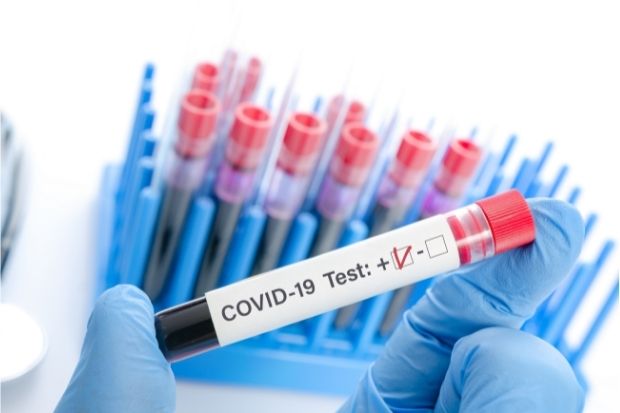
Stock photo / INQUIRER.net
The country tallied a record 17,231 new COVID-19 cases on Friday, its highest number of coronavirus infections since the pandemic began in March last year, as the government shifted the quarantine classification in Metro Manila a degree lower from a lockdown the past two weeks.
The latest case tally from the Aug. 20 bulletin of the Department of Health (DOH) breaches the 15,310 infections on April 2, which was the highest number of infections recorded in the country before Friday.
The DOH also recorded 317 new COVID-19 deaths. The highest number of fatalities so far was the 401 recorded on April 9.The death toll is now at 31,198, representing 1.73 percent of the country’s total 1,807,800 cases.
Meanwhile, 5,595 have recovered from COVID-19, bringing total recoveries to 1,653,351, comprising 91.5 percent of the total cases.
The proportion of active cases stood at 6.8 percent, representing some 123,251 people. Of these cases, 94.1 percent are mild, 3.2 percent are asymptomatic, 0.86 percent are moderate, 0.7 percent are critical and 1.2 percent are severe.
Currently utilized among the country’s hospital beds are 73 percent of 4,100 intensive care unit beds, 61 percent of 20,100 isolation beds, and 66 percent of 14,200 ward beds. Of the 3,100 ventilators nationwide, more than half or 52 percent are in use.
Only two of the 278 laboratories of the DOH were not able to submit their data to the department’s COVID-19 Document Repository System in time for Friday’s case bulletin.
‘Economy and livelihood’
Despite the enhanced community quarantine (ECQ) imposed in Metro Manila from Aug. 6 to Aug. 20, the country may see its active COVID-19 cases rise to more than 150,000 cases by next month, the DOH said in a statement.
“We will continue to see a dramatic increase in cases in the coming days and this is not the time to be complacent,” the department said.
Despite that trend, the ECQ or lockdown imposed in Metro Manila was still eased to modified enhanced community quarantine (MECQ) effective Saturday until the end of August.
The government adopted that policy in consideration of the economy, as the DOH itself explained.
“This decision of the IATF (Inter-Agency Task Force for the Management of Emerging Infectious Diseases) acknowledged that the country cannot always rely on quarantine classifications as it is costly to the economy and livelihood of people,” the department said, referring to the MECQ status which also covered Laguna province and which will take effect in Bataan province on Monday.
“People need to return to a safer and smarter workplace, and act prudently,” the DOH said.
It said that under MECQ, “high-risk activities, such as dine-in services, whether indoor or al fresco, and personal care services are still not allowed. Religious gatherings will also remain online during the MECQ.”
Targeted restrictions
The DOH also pointed out that it was “focusing on targeted restrictions and monitoring granular lockdowns and specific high-risk activities.”
“Adherence to the minimum public health standards is still our best defense against the virus. Early consultation and testing is key to cutting the transmission within households, communities and workplaces,” the department said.
Presidential spokesperson Harry Roque said the high number of new cases on Friday was unlikely to affect the government’s decision of placing the capital region, Laguna and Bataan under MECQ.
He noted in his press briefing that it had only been 14 days since the ECQ was imposed on Metro Manila.
“It will take not only the end of the 14-day period, but a further four, five days before we see a drop in the number of cases,” Roque said.
He said earlier, on Thursday, that the number of COVID-19 cases was not expected to go down immediately after the ECQ.
Cases among minors
Another concern regarding the COVID-19 pandemic is the rise of cases among minors since March 2020, with the DOH recording 119,661 cases in the age group of 14 years old and below, and 74,412 in the 15 to 19 age group.
About 92 percent of each age group had since recovered, but the fatalities are also considerable: 357 among minors 14 years old and below and 138 in the 15 to 19 age group.
In two regions in the Visayas, the DOH has recorded 14,069 cases among minors since the pandemic began.
Pediatric cases in Central Visayas have reached 8,770 as of Aug. 10, with a majority, or 6,887, recorded only since January, according to the Regional Epidemiology and Surveillance Unit (Resu) of DOH-Central Visayas.
There are 1,555 active cases in that region: 437 in Cebu City, 317 in Lapu-Lapu City, 169 in Mandaue City, 291 in Cebu province, 231 in Bohol, 102 in Negros Oriental, and eight in Siquijor.
DOH-Central Visayas also reported nine fatalities among minors between 3 days old and 14 years old in the period of Aug. 1 to Aug. 16.
Pediatric cases in Eastern Visayas have reached 5,299, but according to Dr. Marc Steven Capungcol, who heads the Resu in this region, most of these cases have been mild and asymptomatic. —WITH REPORTS FROM LEILA B. SALAVERRIA, JOEY GABIETA, ADOR VINCENT MAYOL AND INQUIRER RESEARCH